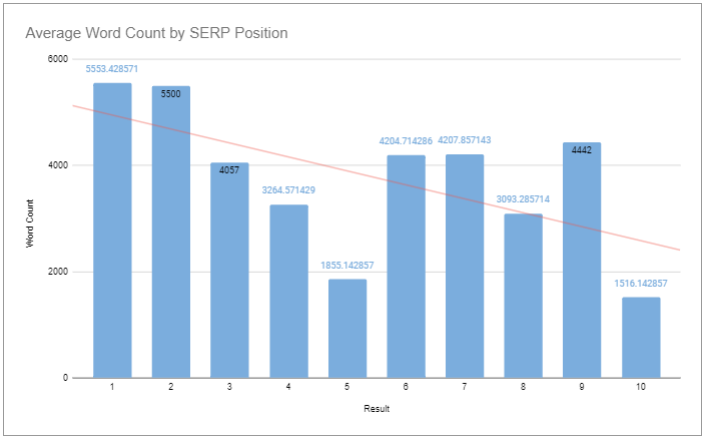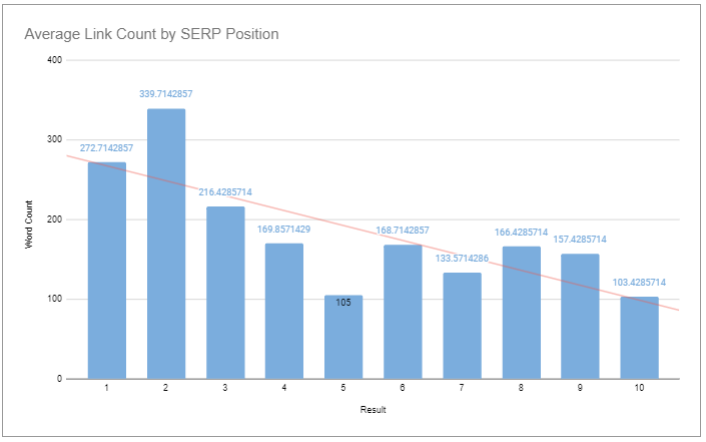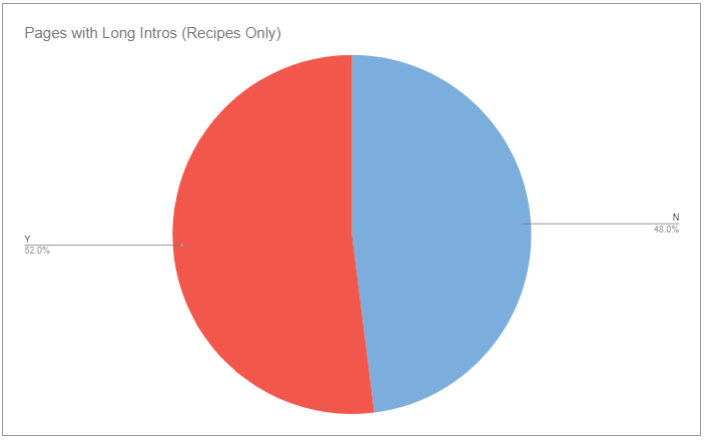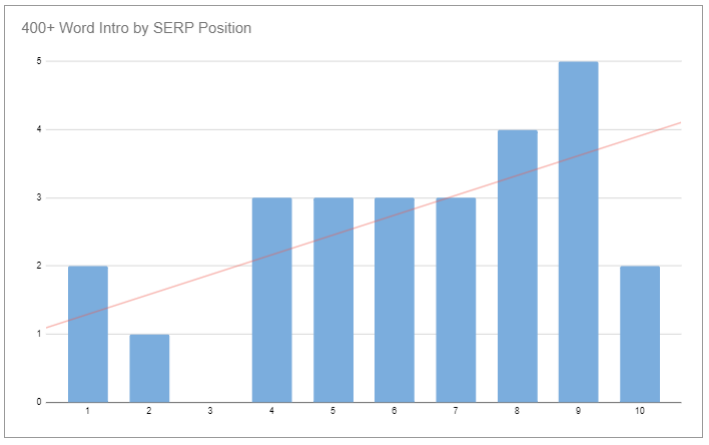It’s happened to all of us: we get a craving for brownies, or are trying to plan appetizers for Superbowl Sunday, or maybe we just want some sandwich alternatives to get us out of a lunch rut.
We navigate to Google, key in a search for the delectable recipe, and click the first results that catches our eye.
Expecting to see a set of ingredients, a temperature at which to set the oven, and perhaps some preparation steps, instead we are greeted with something between a diary entry and War and Peace: the dreaded personal recipe intro.
Whether it’s a walk down memory lane about how grandma used to make the perfect buttermilk biscuits, or a sentimental story about how this particular beef stew recipe saved a school bus of children from sure catastrophe, the over-done, over-long recipe introduction is beyond a meme at this point.
When people take to social media to vent about this particular annoyance and its provenance, a savvy commenter will explain that this strategy has to do with search engine optimization, or SEO.
And it’s true.
Longer, richer, deeper content is rewarded by Google and other search engines. Indirectly, longer content is also rewarded by users, despite the frustration. Why?
- More content on the page (this is not just word count, but also images, video and other content types) means you will spend longer on the page versus if the recipe was served to you above the fold. Time on page is one of the key user metrics that is rewarded by search engines.
- More content on the page also increases scroll depth. This is why you might encounter a couple sentences followed by a large image of the food, repeat ad nauseum. Scroll depth is another user metric that matters.
- More content also creates room for more internal links, another beneficial metric for SEO as internal links help Googlebot understand the page in the context of your entire website architecture.
- Longer content also creates space for external links, including the ever-present Amazon affiliate links which feature prominently on many recipe websites and are a primary driver of revenue, in addition to sponsorship or AdSense.
- Maybe (just maybe!) longer content does provide more value to the user by helping to educate about ingredients, give more specific instructions on preparation steps, and answer frequently asked questions (like whether there are vegan alternatives to butter used in the recipe). This additional info, while perhaps presented out of the preferred hierarchy for the reader, does provide true value.
Lastly, there is the harsh reality that a recipe card itself simply isn’t that extensive. No matter your specializations or secret ingredients, even the most adventurous chocolate chip cookie recipe is not going to deviate substantially from the recipe on the back of the Tollhouse bag. In order to abide by Google’s E-A-T guidelines (expertise, authority, trust), high-value content must be comprehensive and original, among other criteria. It’s hard to be comprehensive and original in a 10-line recipe that calls for a teaspoon of this, a cup of that. So expansive content before and/or after the recipe card is the only answer.
In order to explore this subject a little further, I conducted a micro-analysis of the top 10 results for some randomly selected long-tail recipe keywords.
Methodology
- I conducted all searches on desktop in Google Chrome, localized to Ottawa, ON.
- I focused on recipe blog/recipe website results, excluding snippet results for videos, “people also ask” results that direct to other websites, and ads. Most SERPs had eight websites listed on the first page, so I dipped on to the top of page two to fill out the list.
- I used the Google Chrome browser extension “Detailed SEO Extension” to pull data such as word count and internal link count.
- I define a long introduction as 400-or-more words before the actual recipe card appears.
The only factors in my analysis are word count, internal linking, and the “long introduction” metric mentioned above.
There are countless factors which go into site ranking, not the least of which include backlinks, traffic, domain age, site architecture etc. That is an an analysis for another day.
Keyword analysis – initial approach
I randomly selected the following keywords to search:
- Best dinner recipes
- Healthy lunch ideas
After gathering data on these two keywords, I noticed that none of them fell pray to the “recipe intro” meme. In fact, every single one acted as a category or index page, listing between 20 and 60 recipes in either gallery or list form.
They were matter-of-fact pages, well-structured, and primarily from well-regarded outlets like All Recipes and The Food Network.
Additionally, while the word count of each page was substantive (3,932 word average, with 780 being the shortest and 7,943 being the longest) the depth was primarily tied to the number of recipes featured rather than filler introductory content.
Keyword analysis – secondary approach
For the next set of keywords, I pivoted to a selection that would prompt unique recipe pages instead:
- Chocolate chip cookies
- Easy pulled pork
- Healthy spinach dip
- Oreo cheesecake
- Chicken noodle soup
Let’s unpack the findings.
Average word count

The data shows a positive correlation between word count and SERP position. Position #1 rankings average 5,553 words, which position #2 averages 5,500 words. Meanwhile position #10 has the lowest average word count with 1,516 words.
There are exceptions, to be sure: Position #5 has the second-lowest average word count at 1,855 words.
Still, the trendline in this sample size holds that pages with higher word counts rank higher.
Word Count Types
Not all content is created equal. Some pages absolutely fall into the “recipe intro meme” trap.
But others have long content that is highly valuable.
Science of food and education about methods and ingredients
For instance, chef J. Kenji Là³pez-Alt of Serious Eats has a sterling reputation for educating home chefs on the science of cooking.
Accordingly, his recipe pages are not merely “add this, stir that” schematics of a recipe card. His long introductions are the “secret sauce,” as it were.
Accordingly, the Serious Eats entry for chocolate chip cookies has an epic 6,083 words before the recipe itself – that’s 87% of the page length – but readers wouldn’t have it any other way.
Similarly, others might have critical information to a well-cooked meal that is hard to convey in the recipe card.
Say room temperature butter or sifting the flour is essential to turning out a quality end product, this can be emphasized and explained.
Frequently asked questions
Another useful content type, FAQs can help give guidance to serve the wide range of kitchen setups and dietary circumstances of the reader. How long does it keep? Can I swap in almond flour? Is there an alternative tool to an immersion blender that I can use? Answering any and all of these questions provides huge value to the user.
Comments
Many of the results with exceptionally high total word count are caused by recipe comments. For instance Averie Cooks‘ chicken noodle soup recipe has 27,852 total words, of which 26,125 (94%) are in the comments.
Comments can have value, flagging typos in the recipe, giving feedback about the flavour and texture, and (with a generous grain of salt) help you steer clear of cooking & baking faux pas: I replaced every ingredient and it doesn’t taste good, this is a bad recipe.
Recipe card
Then, of course, there the core recipe itself, which I refer to as the recipe card. Some recipes are more complex, have more steps, or require more detailed descriptions than others.
The odious introductory paragraphs
Finally, we end with the beginning and the long, meandering introductions. To be frank, I didn’t come across too many of these in the analysis. The majority had 400+ word introductions, yes, but they all made contextual sense or provided educational or entertainment value.
That said, I know they are out there! They just, mercifully, weren’t in the top page of search results for the sample set of keywords.
Internal link count

We see the same trendline with internal links; pages with more internal links tend to rank higher in page one results.
Position #1 averaged 273 internal links, while position #2 averaged 339. Position #10 averaged the least at 103 internal links.
To be sure, even 103 internal links is a high volume – recipe websites thrive on internal linking to direct you to alternate recipes (or maybe dessert to follow the dinner recipe you’re looking at now!)
Long introductions

Of the recipe pages reviewed, the majority had long introductions prior to the recipe card of 400 words or more.
The biggest “offender” was Serious Eats as noted above, clocking in at more than 6,000 words of preamble.

Interestingly, long introductions actually scale upward as you move further from position #1 of the SERP (in other words, long intros are negatively correlated with the top rankings).
Of the five #1 ranking pages analyzed, only two had intros of 400+ words or more, only one #2 result had a long intro, and no #3 ranking pages had a long intro.
Summary
- Average word count is positively correlated with ranking at the top for recipe keywords.
- Average link count is positively correlated with ranking at the top of recipe keywords.
- The majority of page 1 results have long introductions, but it doesn’t positively correlate with ranking at the top.
- All sites in the sample group had valid, if meandering introductions.
In spite of the grumbling about these novellas before recipes for turkey pinwheels, users and Google alike are rewarding the current approach to recipe sites.
Google wants to serve users with the right content to address their query.
If a personalized intro to a recipe was enough to have a user bounce or “pogostick” back to the results page, it would be reflected in the rankings and recipe-forward sites would dominate – and that simply isn’t the case.
I’d love to continue, but my cookies are almost out of the oven. Bon appetit!


